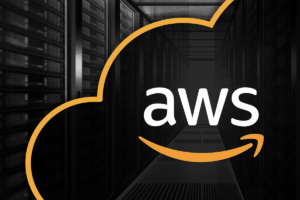How does IIoT differ from IoT? What are IIoT’s potential benefits and risks? Get answers to these questions.

The infrastructure around the world becomes more connected each day. We can thank the Industrial Internet of Things for this connectedness, which stretches far beyond fitness bands to connecting machines and devices in industries such as transportation, manufacturing and healthcare.
The potential remains high for IIoT, but so are the risks. Let’s break down the three basics you need to know about IIoT and how it might help your Industry 4.0 initiatives.
What you need to know about IIoT
1. IIoT differs from IoT
Although IIoT and IoT are bound by the type of technologies that drive both concepts, they differ in a few key ways.
IoT focuses on connecting consumer devices, software, networks and sensors to produce smart devices that are interconnected over the internet. IIoT is all about enabling a smart connection between sensors, networks, software and industrial machines to form a system that collects, monitors, analyzes and exchanges data at an industrial scale.
SEE: Hiring Kit: IoT developer (TechRepublic Premium)
In IIoT, the main focus is on having smart technologies and connectivity to enhance industrial machines. You can read more about this theme in this feature: Top 5 ways industrial IoT differs from IoT.
2. IIoT offers huge potential for future industrialization
IIoT is redefining the ways modern industries operate. With IIoT, more and more manufacturing processes will experience automation, higher efficiency and faster production. This means that IIoT will give rise to smarter factories where decision-making is faster.
For instance, IIoT has shown great potential in revamping some industries, such as energy, fleet management, agriculture and health. Expect more energy optimization as these energy companies use connected logistics, smart metering and smart grids, and remote health monitoring and equipment maintenance for efficient freight transportation.
Discover more about its strengths in this article: Top 5 industrial IoT use cases and examples.
3. IIoT deployments present some new challenges
New technologies usually come with new challenges, and IIoT is no exception. Deploying IIoT comes with high investment costs; buying software, hardware, sensors, alarm systems and more servers to store and process information comes at a high cost. Not many organizations can afford it.
There are also cybersecurity risks associated with IIoT. Due to the high volume of data generated, transported, analyzed and stored by IIoT devices, organizations run the risk of not being able to create an effective data monitoring and security system. Consequently, the cost of managing data breach incidence is high, and not many organizations have what it takes to cope with such risk.
Keep your IIoT future in mind
There is no denying the developmental strides IIoT has brought to modern industries. However, there are still many obstacles currently affecting the IIoT experience. Organizations that wish to go smart with IIoT will need to understand the dynamics of what IIoT offers in terms of pros and cons and decide the extent of its application.
Explore the cons further in this feature: Disadvantages of industrial IoT. If these three things on IIoT are not enough to satisfy your hunger for knowledge, then learn about its brief history and the top five challenges of implementing industrial IoT.
Source of Article



